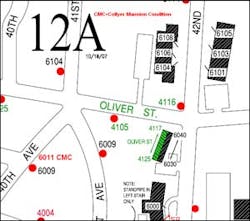In most cases, members are not aware of such conditions until they encounter them while at an alarm.
Everyone in the fire service, no matter their location, should be familiar with term "Collyer Mansion." This is not some fireground nuance that is found only in urban areas, but can now be found even in the most remote of rural settings.
The history of the term is well known. Collyer refers to the two brothers, Homer and Langley in New York City's affluent Harlem neighborhood in 1928. Due to what is now diagnosed as Obsessive Compulsive Disorder, Langley was mostly responsible for the elaborate and complex engineering of mazes and booby traps protecting their residence. In 1943 the exact extent and details of this personal, as well as structural, condition became well known after local authorities removed the bodies of the brothers. It took almost a month after New York City Police Department's Emergency Squad 6 forced entry on March 21 to find the body of Langley Collyer. It is believed he died of suffocation being buried in a two-foot wide space on the second floor. In total, 103 total of debris was eventually removed, 22 in one day.
Familiarity And Recognition
Our response areas are changing and evolving, constantly. Bedroom communities are seeing a greater expansion of themselves as well as a transition in ownership. The once urban fire trap, Collyer's Mansion, are now being found in places such as Roanoke, VA, and Adelphi, MD. First arriving crews are finding their aggressive attack is stopped dead in its tracks not only in apartments but in private dwellings.
In most cases, members are not aware of such conditions until they encounter them while at an alarm. Most widely reported incidents are those that involve a fire and fatality. It is rare, simply due to the apparent mental condition of the occupant, that responders would be aware of such conditions if they were responding for an EMS incident or odor investigation. On these rare occasions, departments need to be able to recognize the exterior as well as interior indicators and share that information with other assigned companies.
The difference between hoarding and simply having a lot of "stuff" is primarily based on one's need to resist compulsions to relieve anxiety. Most hoarders are secretive and may appear highly functional in the workplace or other social settings. The compulsivity of their actions is based on their own self-image. To throw things out is seen as being wasteful and irresponsible, not necessarily lazy. Hoarding is also seen in various stages and for firefighters these early stages can be signs of Collyer's Mansion conditions in the making. The stages, according to National Study Group on Chronic Disorganization, are as follows:
Clutter Hoarding Scale
Level I: all doorways and stairways accessible
Level II: one exit blocked
Level III: recent (within six months) light structural damage to one part of the home; visible clutter outdoors
Level IV: structural damage to part of home (six months or more); damage to two or more sections of wallboard; faulty exterior weather protection
Level V: obvious structural damage; loss of utilities (water, gas, electric)
Recognition of these outward signs should at least cause first-due companies to make an appropriate notation for their members' safety as well as alert other companies. Such information can be shared in various ways by either a brief notation in a mapbook or having it entered into dispatch information for such an address.
Various municipal and county agencies provide citizens with the means to report such conditions anonymously in order to help the occupant receive much needed help. Fairfax County, VA, is one such county that has a Hoarding Task Force. Composed of members of the Health, Planning and Zoning, Adult and Child Protective Services, Fire and Rescue/Inspections, and Sheriff's Departments, they work to eliminate hoarding conditions. This group is a valuable tool for the fire department to "recon" these hazards before the fire. Coordinate being able to get similar information from your EMS companies or your prevention and inspection personnel. The better informed your company is ahead of time takes away any surprise once the front door gets forced, if it can be at all!
Look for the next article, "Company Considerations for Collyer Mansion Conditions" in March.
WILLIAM CAREY, a Firehouse.com Contributing Editor, is a former volunteer lieutenant with the Hyattsville Volunteer Fire Department in Prince George's County, MD. With 20 years, his training is extensive and his experience ranges from a very rural fire department to one the busiest departments among the metropolitan Washington, D.C. area. You can read more of his fire service writings at Firefighter Behavior. To read William's complete biography and view his archived articles, click here. You can reach William by e-mail at [email protected].






